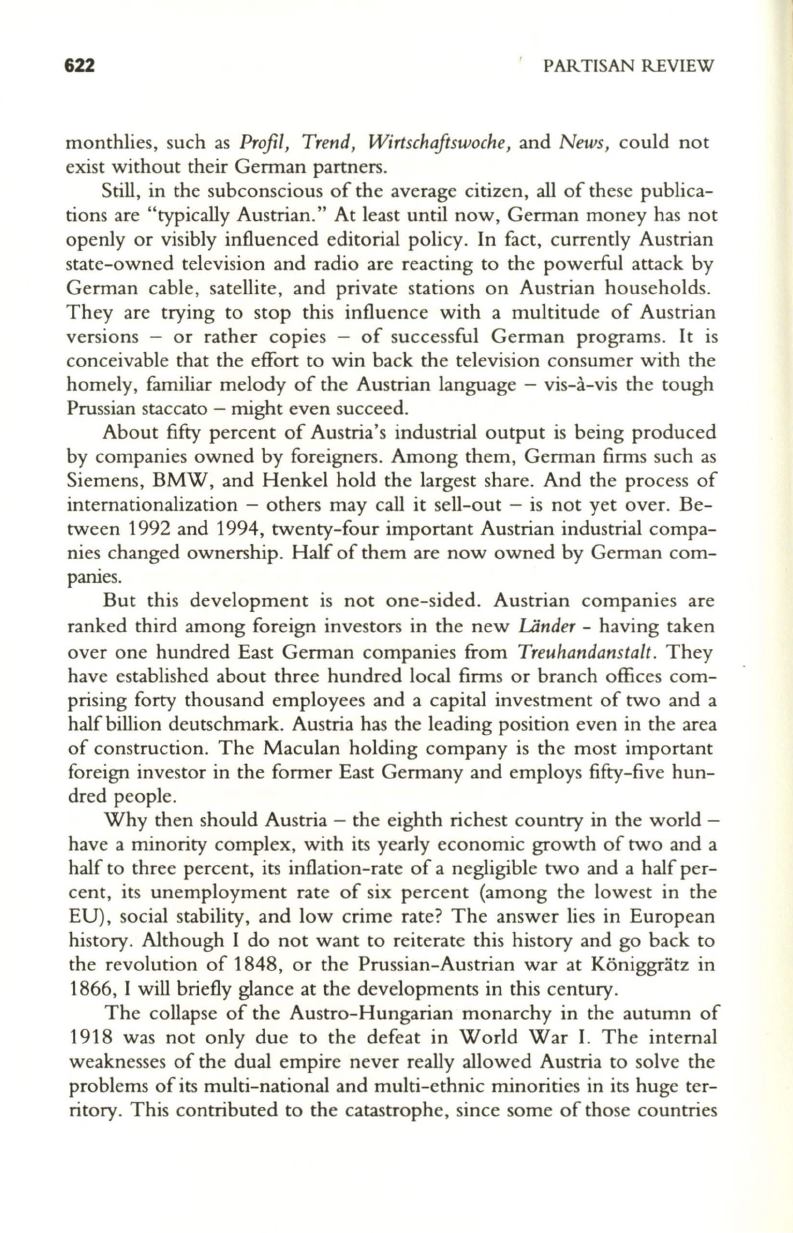
622
, PARTISAN REVIEW
monthlies, such as
Profil, Trend, Wirtschajtswoche,
and
News,
could not
exist without their German partners.
Still, in the subconscious of the average citizen, all of these publica–
tions are "typically Austrian." At least until now, German money has not
openly or visibly influenced editorial policy. In fact, currently Austrian
state-owned television and radio are reacting to the powerful attack by
German cable, satellite, and private stations on Austrian households.
They are trying to stop this influence with a multitude of Austrian
versions - or rather copies - of successful German programs. It is
conceivable that the effort to win back the television consumer with the
homely, familiar melody of the Austrian language - vis-i-vis the tough
Prussian staccato - might even succeed.
About fifty percent of Austria's industrial output is being produced
by companies owned by foreigners. Among them, German firms such as
Siemens, BMW, and Henkel hold the largest share. And the process of
internationalization - others may call it sell-out - is not yet over. Be–
tween 1992 and 1994, twenty-four important Austrian industrial compa–
nies changed ownership. Half of them are now owned by German com–
pames.
But this development is not one-sided. Austrian companies are
ranked third among foreign investors in the new
LAnder
-
having taken
over one hundred East German companies from
Treuhandanstalt.
They
have established about three hundred local firms or branch offices com–
prising forty thousand employees and a capital investment of two and a
half billion deutschmark. Austria has the leading position even in the area
of construction. The Maculan holding company is the most important
foreign investor in the former East Germany and employs fifty-five hun–
dred people.
Why then should Austria - the eighth richest country in the world -
have a minority complex, with its yearly economic growth of two and a
half to three percent, its inflation-rate of a negligible two and a half per–
cent, its unemployment rate of six percent (among the lowest in the
EU), social stability, and low crime rate? The answer lies in European
history. Although I do not want to reiterate this history and go back to
the revolution of 1848, or the Prussian-Austrian war at Koniggratz in
1866, I will briefly glance at the developments in this century.
The collapse of the Austro-Hungarian monarchy in the autumn of
1918 was not only due to the defeat in World War
I.
The internal
weaknesses of the dual empire never really allowed Austria to solve the
problems of its multi-national and multi-ethnic minorities in its huge ter–
ritory. This contributed to the catastrophe, since some of those countries


